Jewellery
The Louvre Heist: The eight exceptional jewels that shaped the history of french jewelry
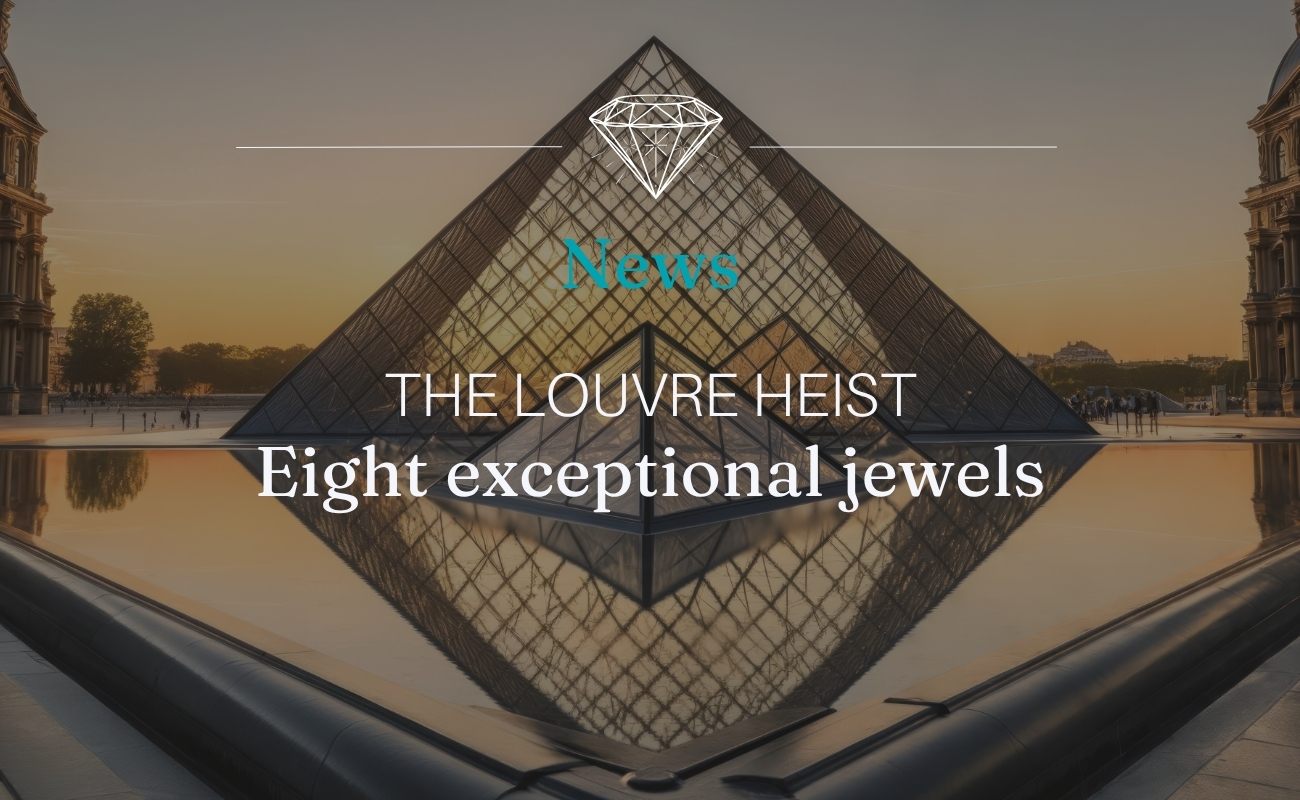
On October 19, 2025, between 9:30 and 9:37 a.m., the Louvre Museum became the scene of a daring and unexpected robbery. In less than ten minutes, eight priceless jewels from the French Crown Jewels collection were stolen from the Galerie d’Apollon, located on the first floor of the Denon Wing. These masterpieces of extraordinary historical and artistic value represented centuries of French jewelry craftsmanship.
A meticulously orchestrated heist
The thieves acted in broad daylight, taking advantage of a moment when the gallery was open to the public.
According to early investigation reports, they managed to disable the security system without triggering any alarms, operating with chilling precision between 9:30 and 9:37 a.m..
The Brigade for the Repression of Banditry (BRB) and the Central Office for the Fight Against the Trafficking of Cultural Goods (OCBC) immediately took charge of the case.
Their goal was clear: to seize the most emblematic jewels, those that embody the grandeur and legacy of French jewelry artistry.
The eight stolen jewels: masterpieces of haute joaillerie
1️. The Sapphire Tiara of Queen Marie-Amélie and Queen Hortense
Created in Paris between 1800 and 1825, this tiara is a jewel of the Empire style. It features 24 Ceylon sapphires with royal-blue hues and more than 1,000 old-cut diamonds, all set in gold and silver. Once worn by Hortense de Beauharnais and later by Marie-Amélie of Bourbon-Two Sicilies, it symbolized dynastic power and continuity. Its symmetry and gemstone purity make it one of the most iconic pieces of First Empire jewelry.

2️. The Matching Sapphire Necklace
This articulated necklace, matching the tiara, combined eight sapphires of various shapes (oval, rectangular, and cushion cuts) and 631 finely set diamonds. Each stone was mounted on a flexible system that allowed the necklace to drape gracefully - a hallmark of 19th-century Parisian craftsmanship. A masterpiece of balance and elegance, it illustrated the transition from imperial opulence to the subtler grace of the Restoration era.

3️. The Sapphire and Diamond Earrings
The final pieces of the sapphire parure paired two central sapphires with a constellation of about fifty rose-cut diamonds. Their pendant design, light and mobile, accentuated the deep blue of the sapphires. They reflected the era’s love of brilliance and symmetry, yet their refined proportions still feel remarkably modern today.
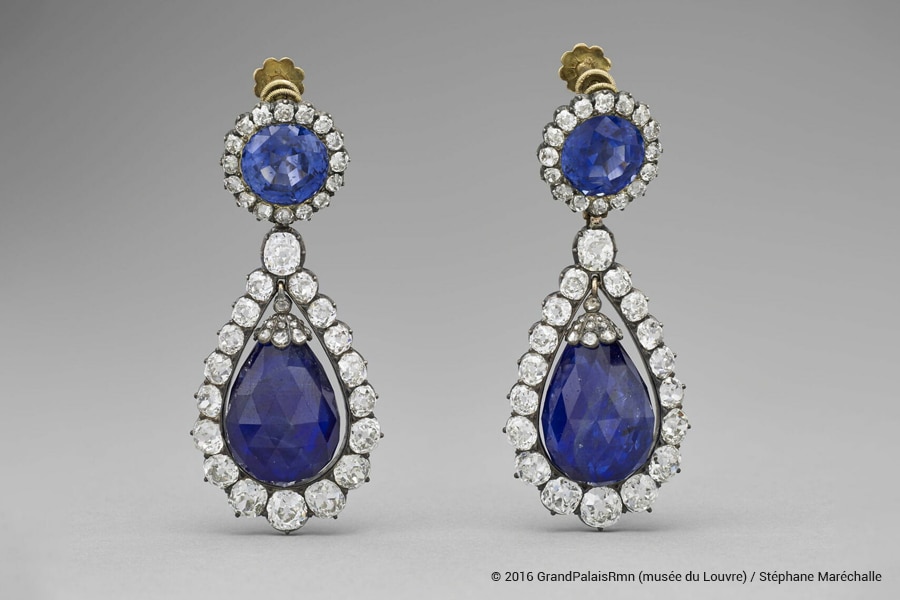
4️. The Emerald Necklace of Empress Marie-Louise
Gifted by Napoleon I to Empress Marie-Louise of Austria on the occasion of their 1810 wedding, this necklace ranks among the most famous imperial jewels. It featured 32 emeralds (including 10 pear-shaped stones) and 1,138 diamonds, mounted in gold and silver in a garland design. The harmony of green and white represented fertility and purity, two imperial virtues. Its perfect balance and exceptional gem quality make it a genuine work of jewelry art.
5️. The Emerald Earrings of Marie-Louise
Complementing the emerald necklace, these earrings contained six emeralds, including two pear-shaped stones of 45.20 carats each, and 108 diamonds. Their claw settings allowed light to pass through the stones, enhancing the rich, deep green of the emeralds. A triumph of visual balance, heavy in size, yet ethereal in elegance.
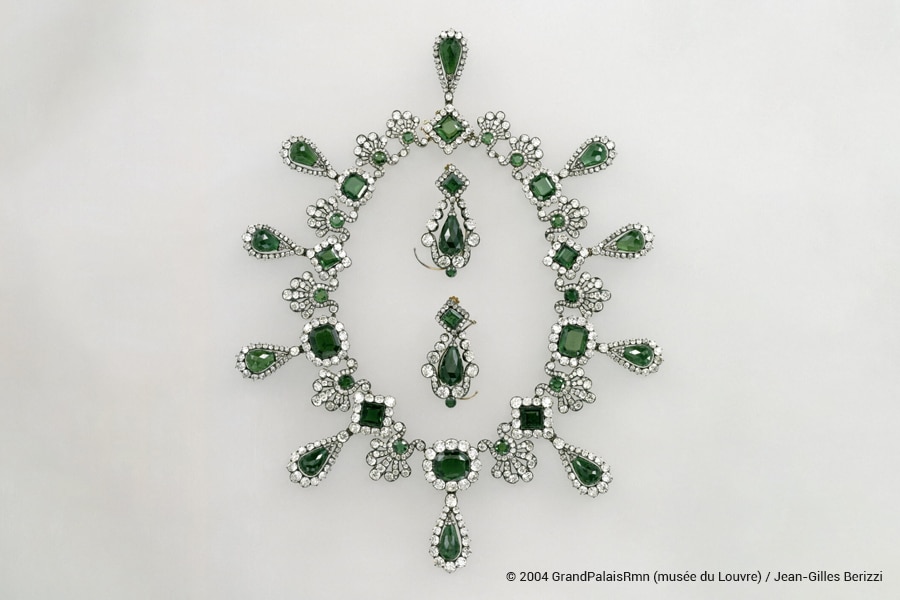
6️. The Reliquary Brooch with Mazarin Diamonds
Crafted around 1855, this exceptional brooch united 94 diamonds, including two legendary Mazarin diamonds once owned by Louis XIV. Set in gilded silver, it combined the prestige of fine jewelry with the symbolism of a keepsake. A blend of faith and splendor, it perfectly embodied the romantic jewelry aesthetic of the mid-19th century.

7️. The Tiara of Empress Eugénie
Dated 1853, this ceremonial tiara featured 212 natural pearls (17 pear-shaped), 1,998 diamonds, and about 1,000 rose-cut diamonds. The meticulously calibrated pearls gave the piece a soft, satiny glow, while the diamonds radiated extraordinary brilliance. This jewel captured the sumptuous elegance of Empress Eugénie de Montijo, an icon of the Second Empire and a true ambassador of French luxury.
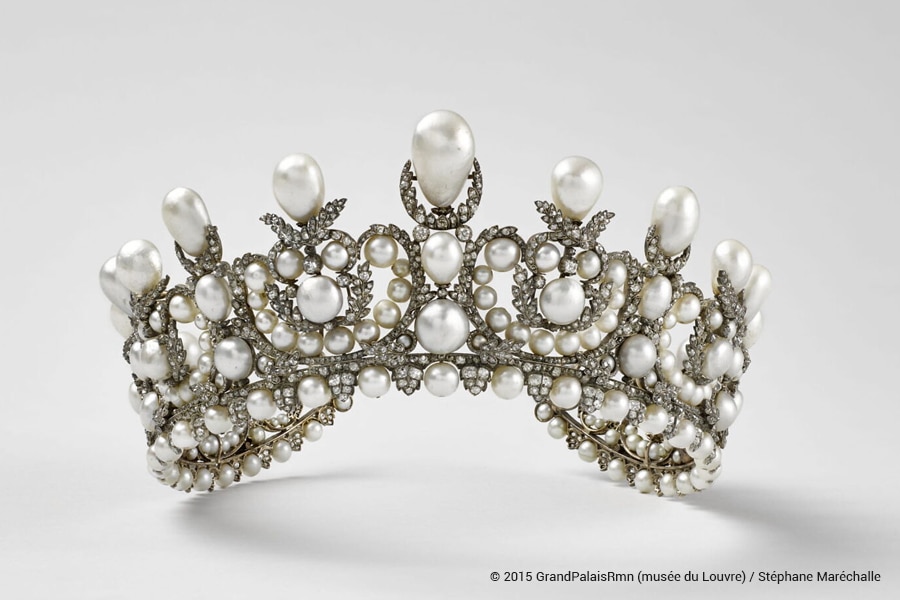
8️. The Grand Corsage Bow of Empress Eugénie
Created around 1855 by the jeweler François Kramer, this monumental jewel comprised 2,438 diamonds and 196 rose-cut diamonds. Articulated and adorned with mobile tassels, it symbolized the fusion between goldsmithing and sculpture. A true piece of ceremonial adornment, it reflected the refined magnificence of the Second Empire, where light and movement reigned supreme.
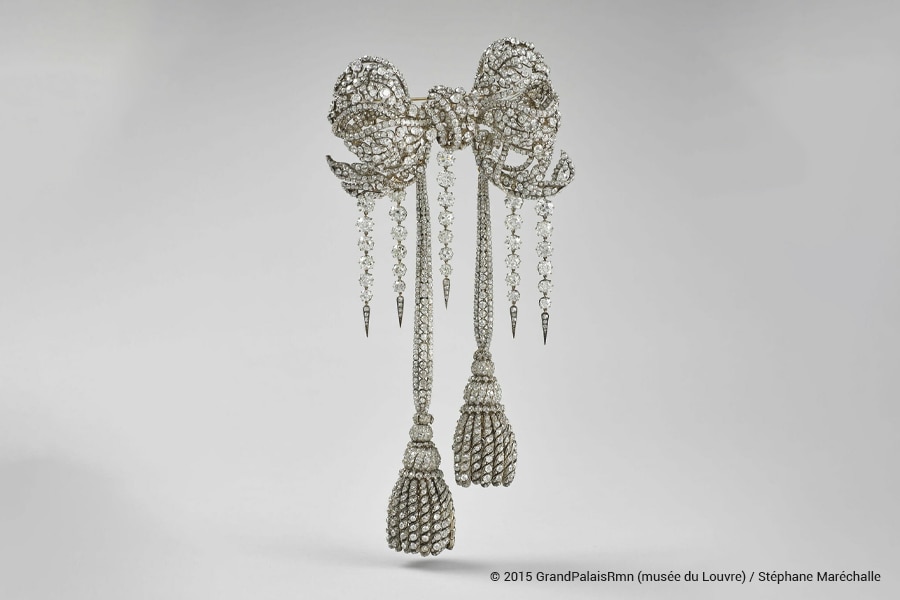
The Crown of Eugénie: A jewel saved in extremis
During their hurried escape, the thieves dropped Empress Eugénie’s crown, which fell from its glass display. Security guards found it intact on the floor just minutes after the alarm was raised. This piece, a symbol of Napoleon III’s reign and a masterpiece of symmetry and craftsmanship, narrowly escaped loss. A miracle, according to several Louvre curators, who see it as a glimmer of hope amid the devastation.
Three historic diamonds spared
Despite the spectacular theft, three of the world’s most famous diamonds remained safely inside the Galerie d’Apollon:
- The Regent - considered the purest and most beautiful diamond in the world, discovered in India in the 17th century.
- The Sancy - a 55.23-carat diamond once worn by Napoleon during his coronation.
- The Hortensia - a 20-carat pink diamond celebrated for its delicate hue and fascinating history.
These gems, symbols of monarchy and empire, will now be kept under even stricter surveillance following this unprecedented heist.
A wounded yet immortal lewelry heritage
Though these eight jewels have vanished, their story and brilliance endure in collective memory. They represented the golden age of French jewelry craftsmanship, uniting the art of setting, gemstone mastery, and the symbolism of power. This heist reminds us that jewelry is far more than decoration, it is a living heritage, a testament to human genius and the timeless beauty of precious stones.